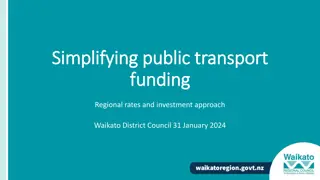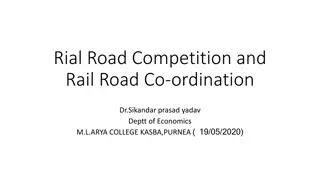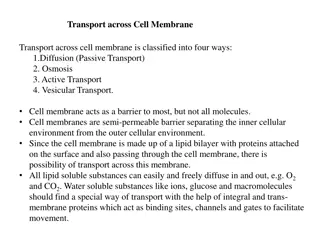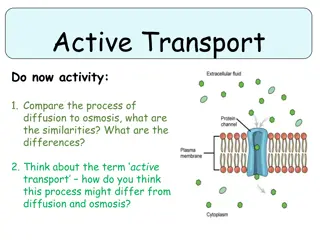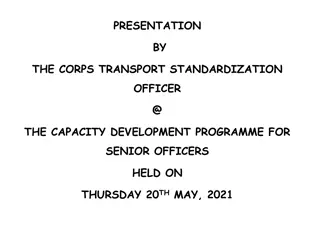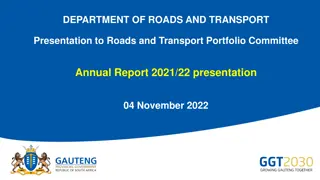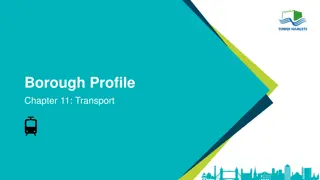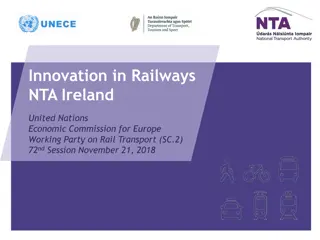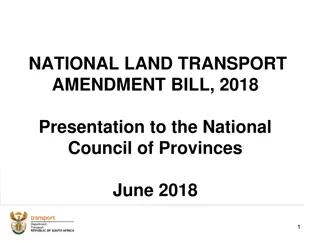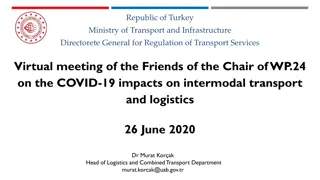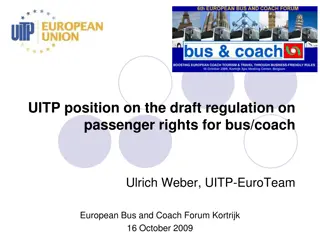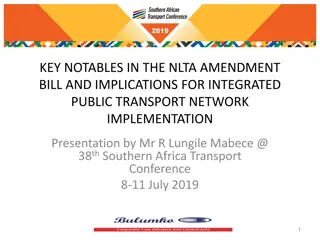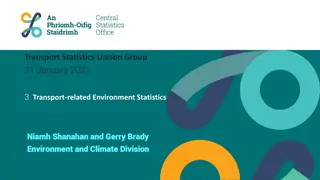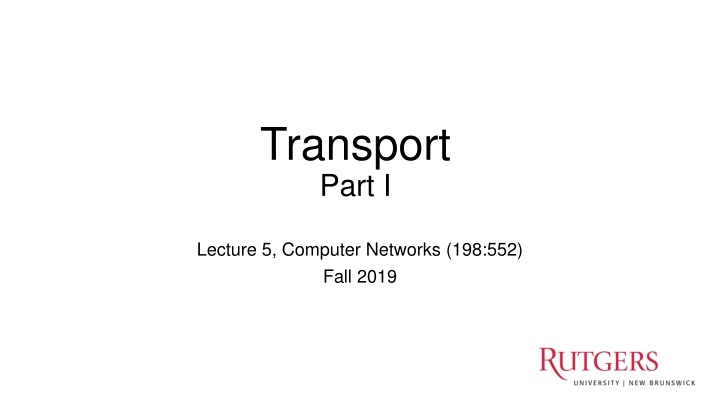
Computer Networks: Transport Layer Fundamentals
Explore the key concepts of the transport layer in computer networks, including best-effort packet delivery, application guarantees at the network edge, modularity through layering, basic transport features, and the two main transport layers - User Datagram Protocol (UDP) and Transmission Control Protocol (TCP).
Download Presentation

Please find below an Image/Link to download the presentation.
The content on the website is provided AS IS for your information and personal use only. It may not be sold, licensed, or shared on other websites without obtaining consent from the author. If you encounter any issues during the download, it is possible that the publisher has removed the file from their server.
You are allowed to download the files provided on this website for personal or commercial use, subject to the condition that they are used lawfully. All files are the property of their respective owners.
The content on the website is provided AS IS for your information and personal use only. It may not be sold, licensed, or shared on other websites without obtaining consent from the author.
E N D
Presentation Transcript
Transport Part I Lecture 5, Computer Networks (198:552) Fall 2019
Network Core: Best effort packet delivery Routers (typically) make no guarantees about whether packets get delivered whether packets will reach without being corrupted whether packets will reach the other side in order the app performance experienced by a user So how are we still able to get good performance over the Internet?
Network Edge: Application guarantees How should endpoints provide guarantees to applications? Transport software on the endpoint is in charge of implementing guarantees on top of an unreliable network Reliability Ordered delivery Packet delay not exceeding 50 ms?
Modularity through layering Protocols stacked in endpoint and router software/hardware Apps: useful user-level functions HTTP FTP NV TFTP TCP UDP Transport: provide guarantees to apps IP Network: best-effort global pkt delivery Ether ATM WiFi Link: best-effort local pkt delivery
Two Basic Transport Features Demultiplexing: port numbers Server host 128.2.194.242 Service request for 128.2.194.242:80 (i.e., the Web server) Client host Web server (port 80) OS Client Echo server (port 7) Error detection: checksums IP payload detect corruption 5
Two Main Transport Layers User Datagram Protocol (UDP) Abstraction of independent messages between endpoints Just provides demultiplexing and error detection Header fields: port numbers, checksum, and length Low overhead, good for query/response and multimedia Transmission Control Protocol (TCP) Provides support for a stream of bytes abstraction 6
Transmission Control Protocol (TCP) Multiplexing/demultiplexing Determine which conversation a given packet belongs to All transports need to do this Reliability and flow control Ensure that data sent is delivered to the receiver application Ensure that receiver buffer doesn t overflow Ordered delivery Ensure bits pushed by sender arrive at receiver app in order Q: why would packets ever be received out of order? Congestion control Ensure that data sent doesn t overwhelm network resources Q: which network resource?
Packet loss Receiver Sender How might a sender and receiver ensure that data is delivered reliably (despite some packets being lost)? TCP uses two mechanisms
Coping with packet loss: (1) ACK Receiver Sender Key idea: Receiver returns an acknowledgment (ACK) per packet sent packet ACK If sender receives an ACK, it knows that the receiver got the packet. packet What if a packet was lost and ACK never arrives? ACK
Coping with packet loss: (2) RTO Receiver Sender Key idea: Wait for a duration of time (called retransmission timeout or RTO) before re-sending the packet RTO In TCP, the onus is on the sender to retransmit lost data when ACKs are not received ACK Retransmission works also if ACKs are lost or delayed
Sending one packet per ACK enough? Receiver Sender Should sender wait for an ACK before sending another packet? Consider: Round-trip-time: 100 milliseconds Packet size: 12,000 bits Link rate: 12 Mega bits/s Suppose no packets are dropped RTT RTO At what rate is the sender getting data across to the receiver? 120 Kilo bit/s (1% of link rate)
Amount of in-flight data We term the amount of unACKed data as data in flight With just one packet in flight, the data rate is limited by the packet delay (RTT) rather than available bandwidth (link rate) Idea: Keep many packets in flight! More packets in flight improves throughput
Keeping many packets in flight Receiver Sender In our example before, if there are, say 4 packets in flight, throughput is 480 Kbits/s! We just improved the throughput 4 times by keeping 4 packets in flight RTT Trouble: what if some packets (or ACKs) are dropped? How should the sender retransmit? RTO
Keeping track of packets (and ACKs) Receiver Sender Every packet contains a sequence number (In reality, every byte has a sequence number) 1 2 3 4 1 ACK echoes the sequence number of the packet that is acknowledged 2 3 4 5 If a packet is dropped, should the receiver ACK subsequent packets? If so, with what sequence number?
Keeping track of packets (and ACKs) Receiver Sender Cumulative ACKs: ACK the latest seq# up to which all packets received Selective ACKs: return one cumulative seq# and ranges of other seq# received 1 2 3 4 1 2 3 Sender retransmits those packets whose sequence numbers haven t been ACKed 4 5 What are the implications of selective vs. cumulative ACKs here?
How should the RTO be set? Receiver Sender Clearly, RTO must be related to RTT But how exactly? 1 2 3 4 1 RTT 2 3 4 5 RTO
Reordering packets at the receiver side Receiver Sender Let s suppose receiver gets packets 1, 2, and 4, but not 3 (dropped) 1 2 3 4 Suppose you re trying to download a Word document containing a report 1 2 4 What would happen if transport at the receiver directly presents packets 1, 2, and 4 to the Word application? 5
Reordering at the receiver side Receiver Sender Reordering can also happen due to packets taking different paths through a network 1 2 3 4 Receiver needs a general strategy to ensure that data is presented to the application in the same order of sender side bytes pushed 1 2 4 5 3
Buffering at the receiver side Network writes here Application can read up to here 1 2 1 4 2 1 4 2 3 Memory on the receiver machine

